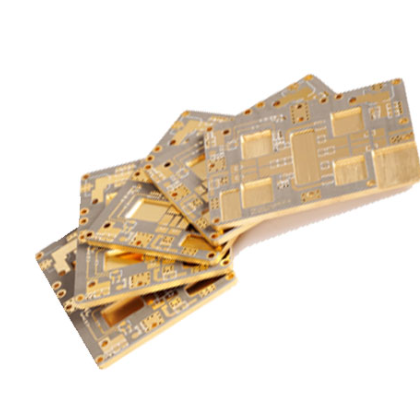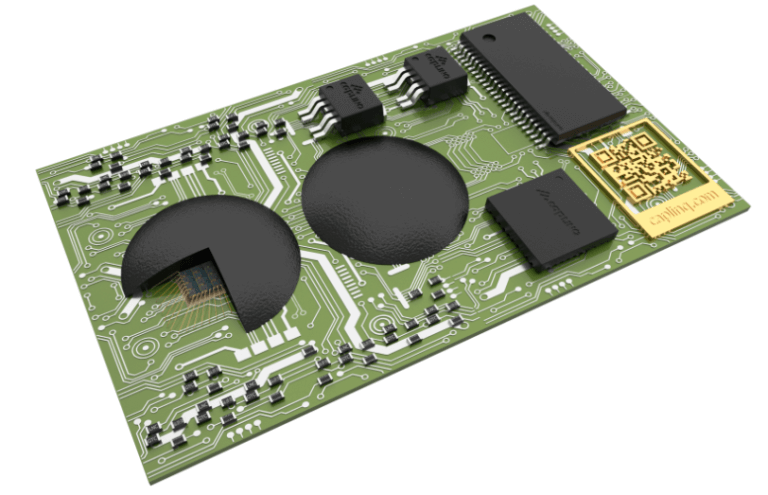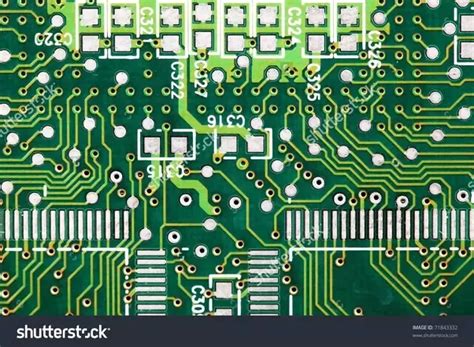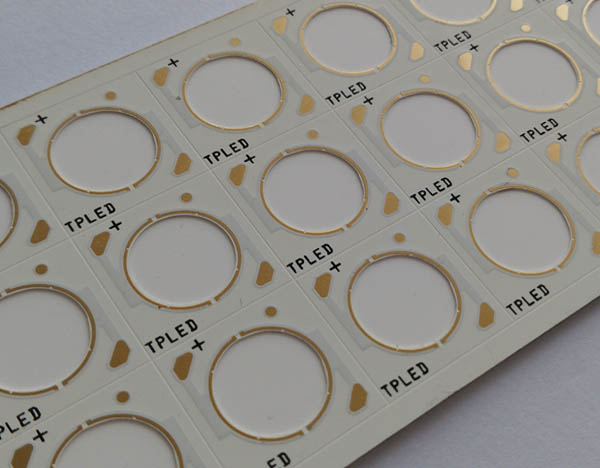Pcb rogers 3003
Advantages Of Using PCB Rogers 3003 In High-Frequency PCB Designs
Rogers 3003 is a high-frequency laminate material that has garnered significant attention in the field of printed circuit board (PCB) design. Its unique properties make it an ideal choice for applications requiring superior performance at high frequencies.
One of the primary advantages of using Rogers 3003 in high-frequency PCB designs is its low dielectric constant.
This characteristic is crucial for maintaining signal integrity, as it minimizes signal loss and ensures that the transmission of high-frequency signals remains efficient and reliable. Consequently, this makes Rogers 3003 particularly suitable for applications such as RF and microwave circuits, where signal fidelity is paramount.
In addition to its low dielectric constant, Rogers 3003 also boasts a low dissipation factor.
This property further enhances its suitability for high-frequency applications by reducing the amount of energy lost as heat. The low dissipation factor ensures that the material can handle high power levels without significant thermal degradation, thereby extending the lifespan of the PCB and improving overall performance. This is especially important in demanding environments where thermal management is a critical concern.
Another notable advantage of Rogers 3003 is its excellent dimensional stability.
This material exhibits minimal dimensional changes when exposed to varying temperatures and humidity levels, which is essential for maintaining the precision and reliability of high-frequency circuits. The stability of Rogers 3003 ensures that the physical dimensions of the PCB remain consistent, thereby preventing issues such as misalignment and signal distortion that can arise from material expansion or contraction. This reliability is particularly beneficial in applications where environmental conditions can fluctuate, such as in aerospace and defense systems.
Furthermore, Rogers 3003 offers superior mechanical properties compared to other high-frequency laminate materials.
Its robust mechanical strength allows it to withstand the rigors of manufacturing processes, including drilling, plating, and etching, without compromising its structural integrity. This durability translates to higher yields during production and reduces the likelihood of defects, ultimately leading to cost savings and improved efficiency for manufacturers. Additionally, the material’s compatibility with standard PCB fabrication processes means that it can be easily integrated into existing production lines without requiring significant modifications.
The thermal conductivity of Rogers 3003 is another critical factor that contributes to its effectiveness in high-frequency PCB designs.
Its ability to efficiently dissipate heat ensures that the PCB can operate at optimal temperatures, thereby preventing overheating and potential damage to sensitive components. This thermal management capability is particularly advantageous in high-power applications, where excessive heat generation can pose a significant challenge.
Moreover, Rogers 3003 is known for its excellent chemical resistance, which enhances its durability and longevity in harsh environments.
The material’s resistance to chemicals such as solvents, acids, and bases ensures that it can withstand exposure to various substances without degrading or losing its performance characteristics. This makes Rogers 3003 an ideal choice for applications in industrial and automotive sectors, where exposure to harsh chemicals is common.
In conclusion, the advantages of using Rogers 3003 in high-frequency PCB designs are manifold. Its low dielectric constant and dissipation factor, excellent dimensional stability, superior mechanical properties, efficient thermal conductivity, and robust chemical resistance collectively make it a highly desirable material for a wide range of high-frequency applications. By leveraging these benefits, designers and manufacturers can achieve enhanced performance, reliability, and longevity in their high-frequency PCB designs, ultimately leading to more efficient and effective electronic systems.
Comparing Rogers 3003 To Other PCB Substrates
When comparing Rogers 3003 to other PCB substrates, it is essential to consider the unique properties and advantages that this material offers. Rogers 3003 is a high-frequency laminate known for its exceptional electrical performance and mechanical stability, making it a preferred choice for various high-frequency applications. To fully appreciate its benefits, it is crucial to examine how it stands against other commonly used PCB substrates such as FR-4, PTFE, and other Rogers materials.
Firstly, Rogers 3003 exhibits a low dielectric constant (Dk) of approximately 3.0, which is relatively stable over a wide frequency range.
This characteristic is particularly advantageous for high-frequency applications, as it ensures minimal signal loss and consistent performance. In contrast, FR-4, a widely used PCB substrate, has a higher dielectric constant, typically around 4.5. This higher Dk can lead to greater signal attenuation and less predictable performance at high frequencies, making FR-4 less suitable for applications requiring precise signal integrity.
Moreover, Rogers 3003 boasts a low dissipation factor (Df), which measures the material’s inherent energy loss.
With a Df of around 0.0013 at 10 GHz, Rogers 3003 ensures minimal signal degradation, which is critical for maintaining signal clarity and strength in high-frequency circuits. On the other hand, FR-4 has a higher dissipation factor, often around 0.02, resulting in more significant energy loss and reduced efficiency in high-frequency applications.
In addition to its electrical properties, Rogers 3003 offers superior thermal management compared to many other substrates.
It has a low coefficient of thermal expansion (CTE), which means it experiences minimal dimensional changes with temperature fluctuations. This stability is crucial for maintaining the integrity of the circuit and preventing mechanical failures. FR-4, while cost-effective and widely available, has a higher CTE, making it more prone to thermal expansion and contraction, which can lead to reliability issues in temperature-sensitive applications.
When comparing Rogers 3003 to PTFE-based substrates, another popular choice for high-frequency applications, it is important to note the differences in mechanical properties.
PTFE substrates, such as Rogers 5880, offer excellent electrical performance with even lower Dk and Df values. However, PTFE materials are often softer and more prone to mechanical deformation, which can complicate the manufacturing process and reduce the durability of the final product. Rogers 3003, with its more robust mechanical properties, provides a balance between electrical performance and ease of fabrication, making it a more versatile option for many applications.
Furthermore, Rogers 3003 is compatible with standard PCB manufacturing processes, which can reduce production costs and lead times.
This compatibility is a significant advantage over some other high-performance substrates that may require specialized processing techniques. The ease of integration into existing manufacturing workflows makes Rogers 3003 an attractive option for companies looking to optimize both performance and cost-efficiency.
In conclusion, Rogers 3003 stands out among PCB substrates due to its exceptional electrical performance, thermal stability, and mechanical robustness. While FR-4 remains a popular and cost-effective choice for many applications, it falls short in high-frequency scenarios where signal integrity and thermal management are critical. PTFE-based substrates offer excellent electrical properties but can be challenging to work with mechanically. Rogers 3003 strikes a balance, providing reliable performance across a range of demanding applications, making it a preferred choice for engineers and designers seeking to optimize their high-frequency circuits.
Best Practices For Manufacturing PCBs With Rogers 3003
When manufacturing printed circuit boards (PCBs) with Rogers 3003, it is essential to adhere to best practices to ensure optimal performance and reliability. Rogers 3003 is a high-frequency laminate material known for its excellent electrical properties, making it a preferred choice for applications such as RF and microwave circuits. To achieve the best results, manufacturers must consider several critical factors throughout the production process.
First and foremost, material handling is crucial.
Rogers 3003 laminates are sensitive to moisture and contaminants, which can adversely affect their performance. Therefore, it is imperative to store these materials in a controlled environment with low humidity and to handle them with clean gloves to prevent contamination. Additionally, it is advisable to pre-bake the laminates before processing to remove any absorbed moisture, which can cause delamination or other defects during manufacturing.
Moving on to the drilling process, selecting the appropriate drill bits and parameters is vital.
Rogers 3003 is softer than traditional FR-4 materials, necessitating the use of specialized drill bits designed for softer laminates. Using the correct spindle speed and feed rate is also essential to minimize burring and ensure clean, precise holes. Furthermore, employing a backup material during drilling can help reduce exit burrs and improve hole quality.
In the context of the etching process, it is important to use a suitable etchant that is compatible with Rogers 3003.
The material’s unique properties require careful control of the etching parameters to achieve the desired line widths and spacing. Over-etching can lead to undercutting, which compromises the integrity of the circuit traces. Therefore, regular monitoring and adjustment of the etching process are necessary to maintain consistency and accuracy.
When it comes to the lamination process, selecting the right bonding materials and conditions is critical.
Rogers 3003 can be bonded using various prepregs and bonding films, but it is essential to choose those that are compatible with the laminate’s thermal and mechanical properties. The lamination temperature, pressure, and time must be carefully controlled to ensure a strong bond without causing damage to the material. Additionally, using a vacuum lamination process can help eliminate air pockets and voids, resulting in a more reliable PCB.
Solder mask application is another important step in the manufacturing process.
Given the high-frequency nature of applications using Rogers 3003, it is crucial to use a solder mask that does not adversely affect the electrical performance of the PCB. Low-loss solder masks are recommended to minimize signal loss and maintain the integrity of high-frequency signals. Proper curing of the solder mask is also essential to ensure durability and resistance to environmental factors.
Finally, the assembly process must be conducted with care to avoid damaging the Rogers 3003 material.
The use of low-temperature soldering techniques can help prevent thermal stress and potential delamination. Additionally, it is important to avoid excessive handling and mechanical stress during assembly, as Rogers 3003 is more susceptible to damage compared to traditional FR-4 materials.
In conclusion, manufacturing PCBs with Rogers 3003 requires meticulous attention to detail and adherence to best practices throughout the entire production process. From material handling and drilling to etching, lamination, solder mask application, and assembly, each step must be carefully controlled to ensure the highest quality and performance of the final product. By following these guidelines, manufacturers can leverage the superior electrical properties of Rogers 3003 to produce reliable and efficient high-frequency PCBs.

Applications Of Rogers 3003 In Modern Electronics
Rogers 3003 is a high-frequency laminate material that has become increasingly significant in the realm of modern electronics. Its unique properties make it an ideal choice for a variety of applications, particularly in areas where performance and reliability are paramount. One of the primary applications of Rogers 3003 is in the field of telecommunications.
The material’s low dielectric constant and minimal signal loss are crucial for high-frequency signal transmission, making it an excellent choice for components such as antennas, power amplifiers, and filters. These components are essential in devices ranging from mobile phones to satellite communication systems, where maintaining signal integrity is of utmost importance.
In addition to telecommunications, Rogers 3003 is also widely used in the aerospace and defense industries.
The material’s ability to perform reliably under extreme conditions, including high temperatures and varying environmental factors, makes it suitable for use in radar systems, navigation equipment, and other critical avionics. The high thermal conductivity of Rogers 3003 ensures efficient heat dissipation, which is vital for maintaining the performance and longevity of electronic components in these demanding applications.
Another significant application of Rogers 3003 is in the automotive industry, particularly in the development of advanced driver-assistance systems (ADAS) and autonomous vehicles. These systems rely heavily on high-frequency radar and communication modules to function effectively. The superior electrical properties of Rogers 3003 enable the precise and reliable operation of these modules, contributing to the overall safety and efficiency of modern vehicles. Furthermore, the material’s robustness and durability ensure that it can withstand the harsh conditions often encountered in automotive environments.
The medical field also benefits from the unique properties of Rogers 3003.
Medical devices such as MRI machines, diagnostic equipment, and wearable health monitors require high-performance materials to ensure accurate and reliable operation. The low signal loss and high-frequency capabilities of Rogers 3003 make it an ideal choice for these applications, where precision and reliability are critical. Additionally, the material’s biocompatibility and resistance to environmental factors further enhance its suitability for use in medical devices.
Moreover, Rogers 3003 finds applications in the realm of consumer electronics.
As the demand for faster and more efficient electronic devices continues to grow, the need for high-performance materials becomes increasingly important. Rogers 3003 is used in the production of high-frequency circuit boards for devices such as smartphones, tablets, and wireless routers. The material’s excellent electrical properties ensure that these devices can operate at higher frequencies with minimal signal loss, resulting in improved performance and user experience.
In the realm of industrial electronics, Rogers 3003 is employed in the development of high-frequency sensors and control systems.
These systems are essential for monitoring and controlling various industrial processes, ensuring efficiency and reliability. The material’s ability to maintain stable performance under varying conditions makes it an ideal choice for these applications, where precision and consistency are crucial.
In conclusion, the applications of Rogers 3003 in modern electronics are vast and varied, spanning multiple industries and sectors. Its unique properties, including low dielectric constant, minimal signal loss, high thermal conductivity, and robustness, make it an indispensable material for high-frequency applications. As technology continues to advance, the demand for high-performance materials like Rogers 3003 is likely to grow, further solidifying its importance in the world of modern electronics.






